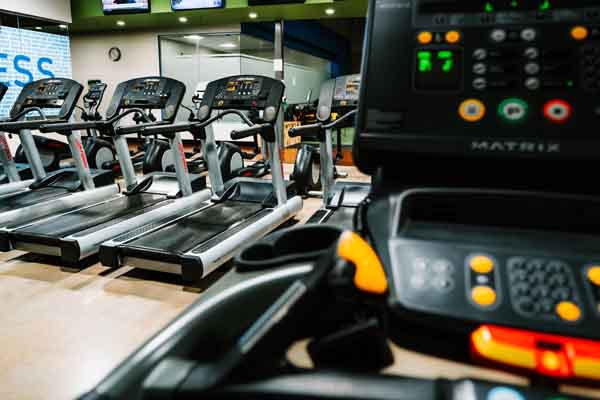Aerobic training as any other kind of training falls under the law of specificity, that means your body will adapt to the level of stress you place and by time will require more volume of stress in order to produce higher level of adaptation.
Do you find yourself struggling to improve in running? Here we will discuss how to go step by step improve and perform running interval training.
In order to start aerobic running interval training as a beginner you need to ensure that you will go through phases to allow your body to adapt. By doing this you will avoid the overtraining that will lead you more often to an injury. Running interval Training for beginners is a step by step process and you can break it down as a beginner with an aerobic running interval training into three phases by using three heart rate zones.

I suggest if you don’t have already by now any heart rate monitor device such a watch or any other device to buy one since its really useful for any activity you perform. I am a big fan of Garmin watches and Sundo watches and I consider them the best devices.
Below I recommend you two Garmin watches, one entry level Garmin watch and one more advance. Personally, I use the Garmin Fenix watch that can do more than I really want (Amazon Choice with top reviews) so really you can go cheaper and buy an entry level watch as the Garmin Forerunner 15.
I believe that your choice though should be the mid range watch of Garmin the Forerunner 45S that is in Amazon with 4.5 stars rating out of 1026 ratings. it has a stylish design, loaded with smart functions plus it has a really good price and is available now in Amazon.
In any-case, make sure you buy the watch with a heart rate strap or a watch built in heart rate so you can monitor your HR while training.
Before you start any aerobic training is good to calculate your Maximum Heart Rate. A generic formula to do this is 208 − (0.7 Χ person’s age). So for our example in this article we will use a healthy adult of 43 years old. Consequently using the formula above the Maximum heart rate of this person is 178.
Phase 1: Built your aerobic house
In this phase you can train to improve your aerobic fitness by targeting of heart rate of 65 to 75% of Maximum heart rate. In our example as per for a 43yo person he must be training between a heart rate of 115 and 133 per minute.
In case you don’t have a HR monitor you should be evaluating the effort by feel and this effort should feel little hard and to be able to hold a conversation while training. In this phase you should be able to go gradually to be able to run between 30-60 minutes.
If you are a completely beginner you should start with only 5 minutes and gradually adding more time. In this phase you should be lightly jogging or even walking depends on your level of fitness. Once you are able to maintain your running within this HR zone, you can move to phase two. Phase 1 will also help your muscular endurance demands for the harder sessions to follow of the next phases.
Maximum Heart Rate generic formula to calculate is 208 − (0.7 Χ person’s age).
A good training session for this phase is:
- Warm up for 5 minutes (walk-jog)
- Run 30-60 minutes at Phase 1 HR zone (65-75% of HRmax – if total beginner as mentioned start with 5 minutes and add slowly time)
- Cool down 5 minutes (walk-jog)
If you are a total beginner you may need 2-3 months to adapt to this phase. More active people will adjust fairly easy at this phase but it’s wise to be patient and give time to the muscles, tendons and aerobic system to adapt. It’s the more important phase as we build the base, our aerobic house.
Phase 2: Interval Training
Once you feel that you completed phase 1 this phase is for the people with low-to-moderate aerobic fitness levels who are ready to begin training at higher intensity levels. In this phase we will increase the workload such as speed, incline and level in order to increase heart rate to enter into the next HR zone and reduce effort to go back to the initial heart rate zone.
In this phase we will take our body to the next HR zone between 76-85% of HR max. For our example of the 43yo person we will push our HR between 135-151 HR per minute. If you don’t use a HR monitor, you should feel that the interval session is hard and you should be able to complete a sentence with difficulty by saying few words each time.
This stage we will introduce the running interval training which our intensities will vary from zone 1 to zone 2. We can use the following below training:
1. Start by warming up in zone one for 5 to 10 minutes (65-75% of HRMax)
2. Perform 1 minute interval in zone two by gradually increase the workload (speed, incline) to raise the heart rate up to zone two within that minute. Maintain HR to zone 2 (76%-85% of HRmax) à this will take 30-45 seconds to reach into that zone for good so actually you will be in that zone for 15-30 seconds. If you cannot reach the 85% is ok, slowly slowly over time this will improve.
3. Once you complete the 1 minute interval return to zone one for 3 minutes.
4. Repeat this if you can recover your heart rate back into the zone one range within the 3 minutes otherwise give some more time since is very important when you do interval training to recover back to zone one between the intervals.
A good training session for this phase is:
- Warm up for 5 minutes (walk-jog)
- Repeat 3 times
- 1 minute in zone 2 (76-85% of HRmax)
- 3 minutes in zone 1 (65-75% of HRmax)
- Cool down 5 minutes (walk-jog)
Increase repetitions from 3 up to 8 as you get stronger over time and that will be a total of 32 minutes interval program. Once you are in this level you can start changing the ratio, meaning 1 minute interval in zone 2 – 2 minutes in recovery zone 1 until you reach the level of ratio 1:1 meaning 1 minute interval – 1 minute in recovery zone.
You must be really careful in this phase and not overtrain yourself with interval training, recovery zone is important, so basically alternate within your week this workout of phase 2 with the workout of phase 1. For example, on Monday do the workout of Phase 1, then on Wednesday do the interval training of Phase 2 and on Friday return back to phase 1 workout.
Phase 3: Stepping up your aerobic game
Once your body is adapted to the above training you can move to phase 3 that will include a moderately high aerobic fitness level will use heart rate zones one, two, and three. In this phase focus to increase your workload such as speed and incline to improve your VO2max efficiency.
This phase will introduce you to zone 3, 86-95% of HRMax. For the sake of our example of the 43 yo person that has 178 max HR, zone 3 will be between 153 – 169 bpm. In case you don’t have a HR monitor and you run by feel, you should feel that is a tough session.
A good training session for this phase is:
- Warm up in zone 1 for up to 10 minutes.
- Repeat 3 times
- 1 minute in zone 2 (76-85% of HRmax)
- 1 minutes in zone 3 (86-95% of HRmax)
- Cool down 5 minutes (walk-jog)
Again it is vital on your weekly, monthly paln to incorporate all phases training to give time to your muscles, tendons to adapt and avoid injuries by overtraining.
Once your overall conditioning improves the stage III programs can be progressed similarly to stage II workouts, decreasing work-to-rest ratios and increasing the duration of high-intensity intervals.
You must always train by feel even if you use a HR monitor and if you feel uncomfortable to stop the exercise. Before you do any aerobic training I suggest you speak with professionals and your medical professionals or your personal doctor to ensure and to give you the go ahead since aerobic exercise is a strenuous activity for the heart.
Note: This article it’s a personal opinion and is not a professional or medical advice – always consult your doctor or seek professional advice before you perform any training that may harm your health.







